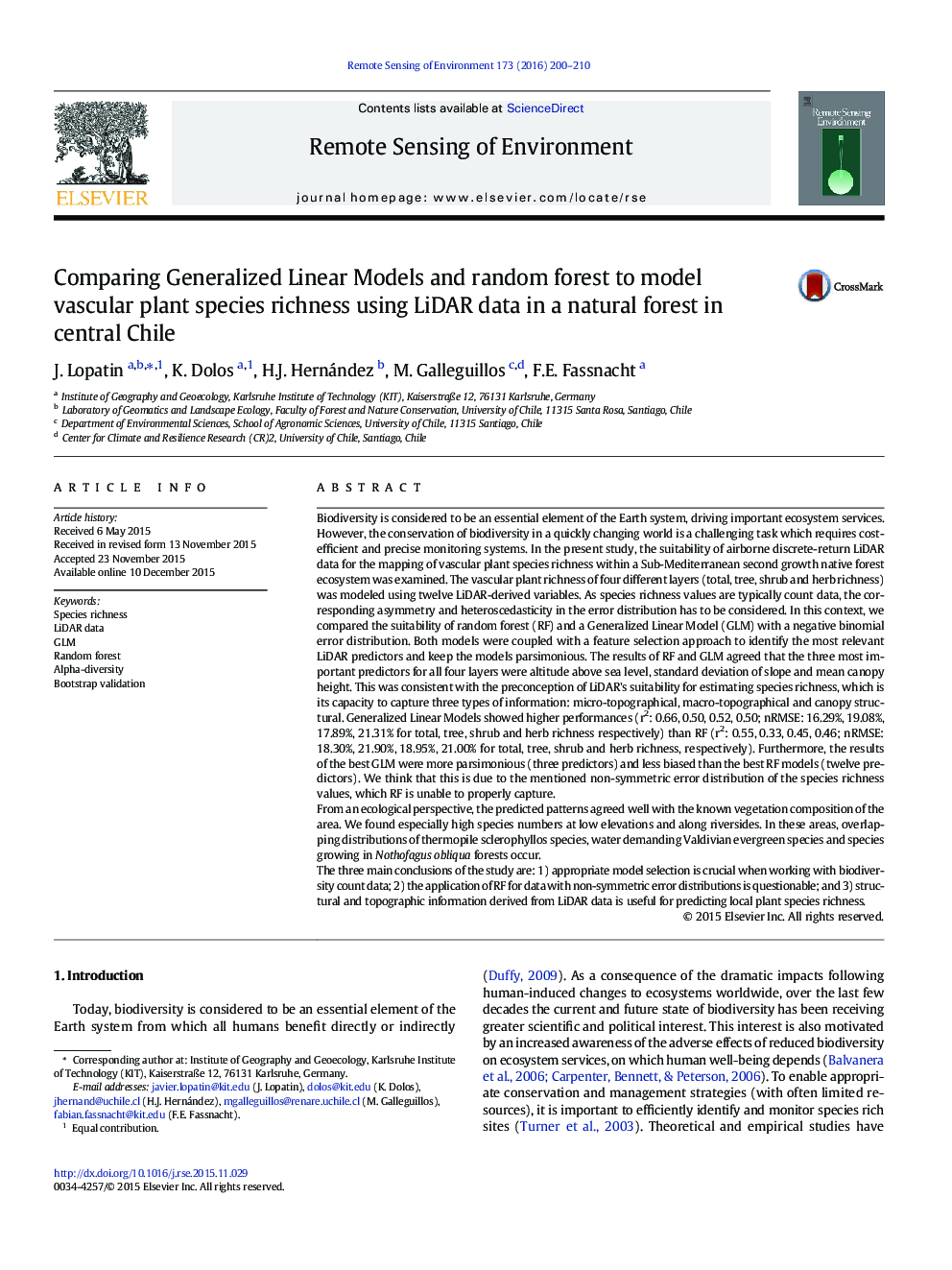| Article ID | Journal | Published Year | Pages | File Type |
|---|---|---|---|---|
| 6345669 | Remote Sensing of Environment | 2016 | 11 Pages |
â¢Vascular plant richness for total, tree, shrub and herb richness were estimated.â¢Generalized Linear Models (GLM) and random forest (RF) were compared.â¢GLM assuming a negative binomial error distribution outperformed random forest.â¢RF dealt less efficiently with the asymmetric error distribution of count data.â¢Total species richness was estimated with good accuracies (r2 = 0.66, nRMSE = 16.29%).
Biodiversity is considered to be an essential element of the Earth system, driving important ecosystem services. However, the conservation of biodiversity in a quickly changing world is a challenging task which requires cost-efficient and precise monitoring systems. In the present study, the suitability of airborne discrete-return LiDAR data for the mapping of vascular plant species richness within a Sub-Mediterranean second growth native forest ecosystem was examined. The vascular plant richness of four different layers (total, tree, shrub and herb richness) was modeled using twelve LiDAR-derived variables. As species richness values are typically count data, the corresponding asymmetry and heteroscedasticity in the error distribution has to be considered. In this context, we compared the suitability of random forest (RF) and a Generalized Linear Model (GLM) with a negative binomial error distribution. Both models were coupled with a feature selection approach to identify the most relevant LiDAR predictors and keep the models parsimonious. The results of RF and GLM agreed that the three most important predictors for all four layers were altitude above sea level, standard deviation of slope and mean canopy height. This was consistent with the preconception of LiDAR's suitability for estimating species richness, which is its capacity to capture three types of information: micro-topographical, macro-topographical and canopy structural. Generalized Linear Models showed higher performances (r2: 0.66, 0.50, 0.52, 0.50; nRMSE: 16.29%, 19.08%, 17.89%, 21.31% for total, tree, shrub and herb richness respectively) than RF (r2: 0.55, 0.33, 0.45, 0.46; nRMSE: 18.30%, 21.90%, 18.95%, 21.00% for total, tree, shrub and herb richness, respectively). Furthermore, the results of the best GLM were more parsimonious (three predictors) and less biased than the best RF models (twelve predictors). We think that this is due to the mentioned non-symmetric error distribution of the species richness values, which RF is unable to properly capture.From an ecological perspective, the predicted patterns agreed well with the known vegetation composition of the area. We found especially high species numbers at low elevations and along riversides. In these areas, overlapping distributions of thermopile sclerophyllos species, water demanding Valdivian evergreen species and species growing in Nothofagus obliqua forests occur.The three main conclusions of the study are: 1) appropriate model selection is crucial when working with biodiversity count data; 2) the application of RF for data with non-symmetric error distributions is questionable; and 3) structural and topographic information derived from LiDAR data is useful for predicting local plant species richness.
